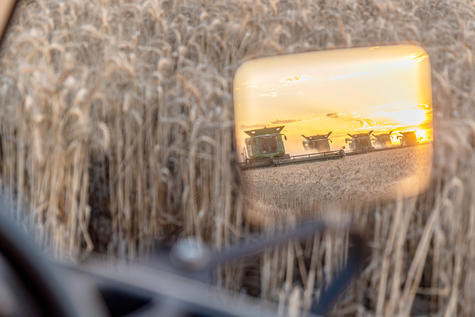Rural
4 July, 2024
GrainGrowers evaluates fuel alternatives
Phasing out the use of fossil fuels on farm will not be without its challenges for broadacre croppers across the Wimmera Mallee, GrainGrowers predicts.

In a new report, the national organisation examines possible alternative fuels for farm machinery and equipment and cautions that interim technical solutions are needed to bridge the gap between traditional fuels and a sustainable future.
'Fuels, Inputs of the Future' calls for governments to work with industry to remove barriers to non-traditional technologies to ensure agricultural industries are not disadvantaged during the transition period.
GrainGrowers advocacy and rural affairs manager Sean Cole said tackling the emission issue would require cost reductions and improved efficiency of low-emission technologies.
"A move from fossil fuels to renewables is a significant long-term challenge for Australian agriculture, balancing economic viability and practicality of emerging technologies in the push for a greener more secure energy future," Mr Cole said.
"As the government moves towards a greener, secure energy future, it is critical that there is a co-ordinated and strategic approach for agriculture over this transition.
"Government ambition must be aligned with practical availability and affordability of emerging technologies to avoid burdening growers with excessive financial costs.
"An agriculture-specific low-emissions vehicle roadmap is required to allow a co-ordinated and strategic response to be developed."
The report covers the grain industry's heavy reliance on diesel, which accounts for 85 per cent of all on-farm energy use.
According to the paper, the grains industry is considered especially hard to abate, production being centred on rural and remote locations, with long operational cycles and with vehicles requiring high torque.
"There is no simple solution and the answer lies in a shift toward a combination of renewable fuels such as biofuels, green hydrogen and renewable electric power, taking into account availability, costs, infrastructure and technological advancements over time," Mr Cole said.
The GrainGrowers report covers the current development of hydrogen technology (including farm hydrogen prototypes), battery-electric vehicles, the development of bio and renewable fuels, and fuel-agnostic vehicles designed to be retrofitted as technological advances are implemented.
An analysis of the technology options available to growers highlights the projected costs and emission profiles of various fuels up to 2050.
Mr Cole said comparing running costs for a typical commercial-scale tractor over the period from 2024 to 2050 provided insight into the challenges ahead for grain growers.
"The analysis highlights the practical costs of emission reduction," he said.
"If we look at the difference between current fossil-based energy sources and hydrogen, there is a large cost divergence.
"However, work is being undertaken in various countries to achieve low-cost green hydrogen production and to make its costs competitive with fossil fuels."
Mr Cole said electric vehicles brought with them their own set of issues.
"Electric vehicles, on the other hand, are close to competitive against fossil-fuel-derived diesel [but] farm technology is still under development and faces range and recharging challenges."
Mr Cole said biofuel was one means of potentially bridging the gap between existing and emerging technologies.
"Although biofuel has a higher running cost base than fossil-fuel diesel, it would deliver benefits through reduced exhaust emissions," he said.
"Another advantage is that, unlike other technologies, minimal modifications are required to run existing farm or transport machinery on renewable biofuels."